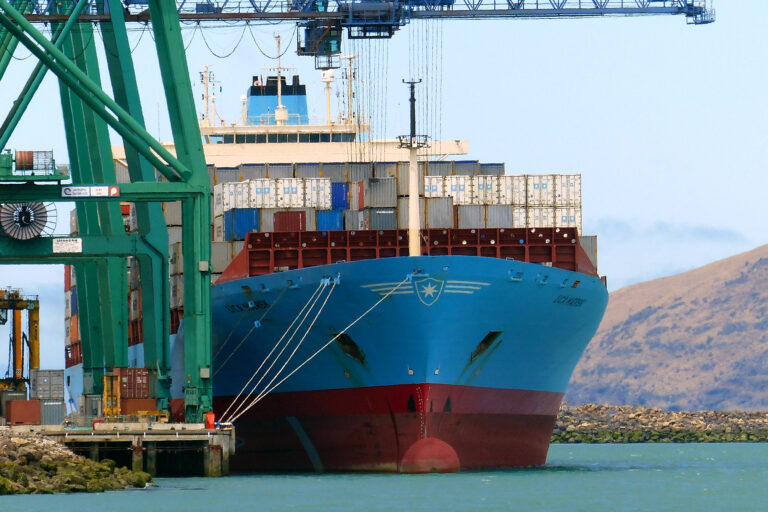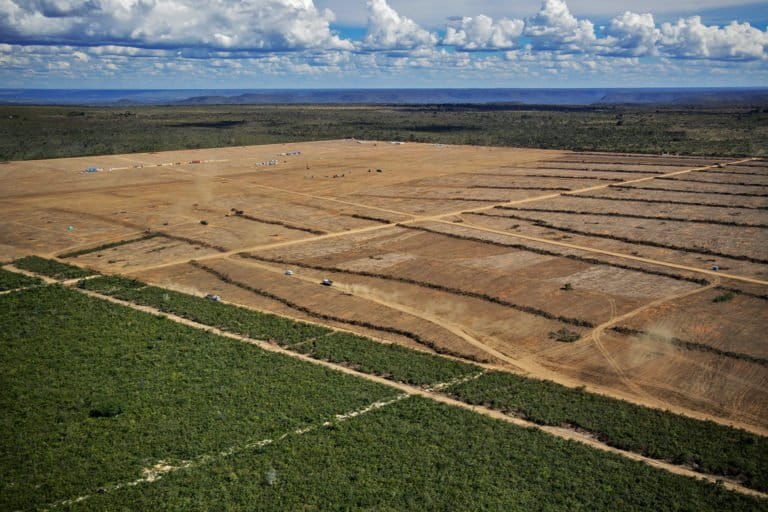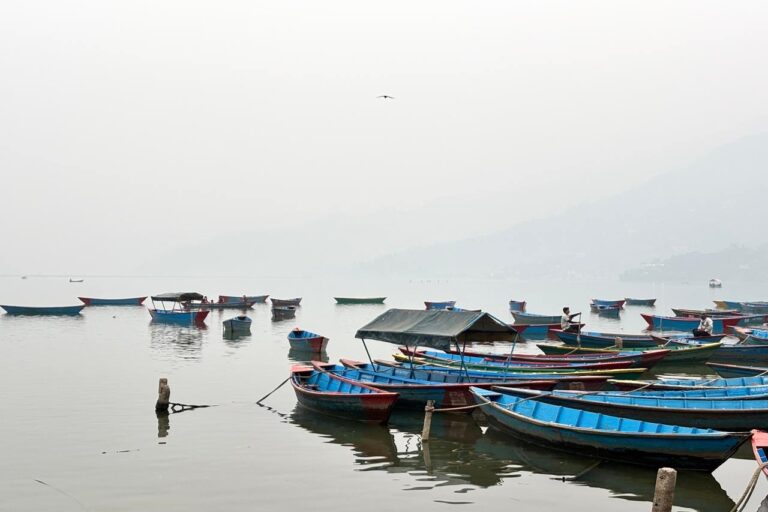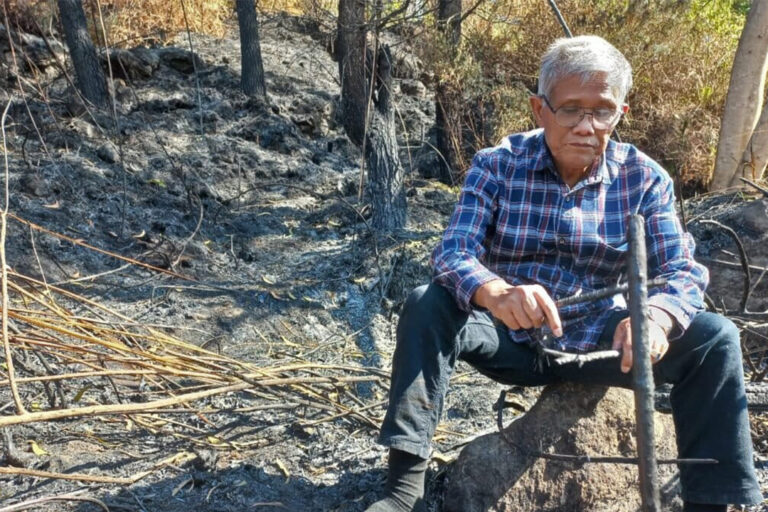- The concept of restoring more than one type of marine habitat at a time — such as oyster reefs, seagrass meadows and salt marshes — is becoming increasingly popular as scientists and conservationists learn about the advantages of this approach.
- Many studies clearly show the mutual benefits that integrated habitats provide to each other, as well as the larger benefits offered to the ecosystem.
- Yet other studies show mixed results, drawing attention to the complex nature of this approach.
- Numerous seascape restoration projects are taking place around the world, including in the coastal bays of Virginia, U.S., the sea off the coast of South Australia, and the estuaries and lochs in the U.K.
After years of scallop dredging and fish farming, Loch Craignish, a coastal inlet near Argyll, Scotland, was in disrepair. The dredging had destroyed parts of the seafloor, effluent had polluted the water, and the biodiversity was noticeable only by its absence. But in 2020, members of community group Seawilding began to restore the loch by laying cages of native oysters in the shallow waters. As they worked to build back the shellfish, they noticed a few plots of seagrass speckled across the seafloor, close to where oyster reefs had once grown.
“We were finding tiny patches of seagrass all the way around, and areas where it looked as if there should be seagrass but there isn’t,” Danny Renton, director of Seawilding, told Mongabay.
The realization led members of Seawilding to add another species to their restoration plan: seagrass. They began to collect seeds from the existing plants, which they brought onto land to bundle into hessian bags before replanting them into the seabed. Now, in addition to restoring about 300,000 native oysters (Ostrea edulis), there is also about a quarter of a hectare (0.6 acres) of seagrass. Renton said he and other members are already noticing a boost in biodiversity across the integrated habitat of oyster reef and seagrass, as fish and other species gravitate there to feed, spawn and shelter.
“The two just went hand in hand,” Renton said. “It was by ecological accident, in a way.”
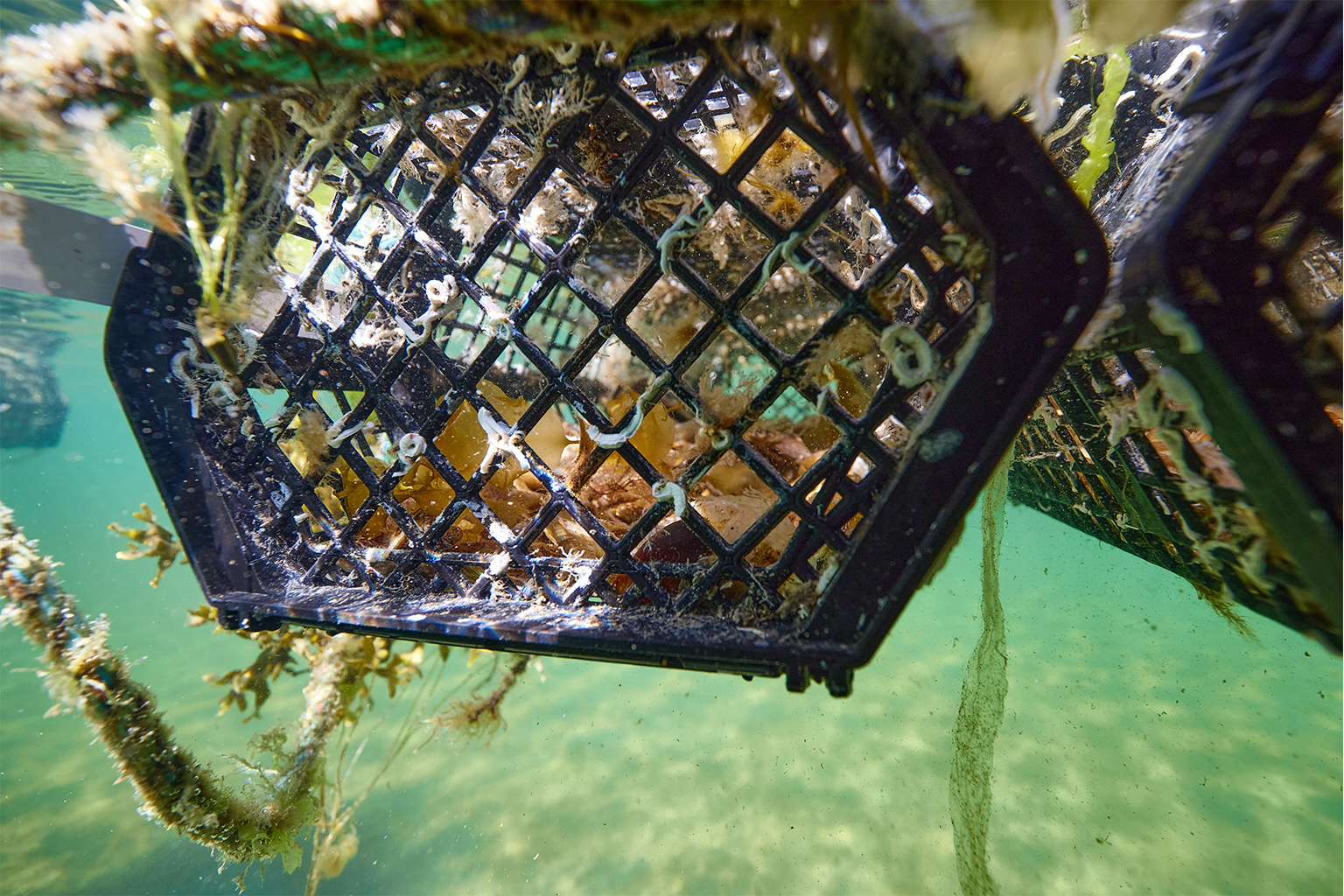

While the Seawilding team did not originally plan to restore two different habitats in the loch, the concept of doing so, whether by happenstance or design, has been gaining traction across the world. Those involved in this kind of co-restoration, also known as seascape restoration, say powerful synergies can emerge between different habitats like shellfish reefs, seagrass meadows and salt marshes. For instance, oysters and other shellfish are known to clarify the water to enable seagrass to grow, while seagrass can help protect shellfish from acidifying waters that chew away at their shells. Oyster beds can help stabilize salt marshes, while salt marshes can protect seagrasses from harmful nutrients like nitrogen.
Yet researchers are still learning about the complex interrelationships that can play out between integrated habitats, the larger benefits this integration can have on an ecosystem, and the ways in which multiple habitats can be restored at a single site.
Despite the knowledge gaps, co-restoration is picking up speed in marine conservation work — and many experts say this is the direction in which we should be heading.

‘You’ve got the connectivity’
The co-restoring of habitats like oyster reefs and seagrass meadows may be a recent innovation, but these habitats have been found together in nature since time immemorial. The west coast of North America, from southern Alaska to southern California, used to be fringed with Olympia oyster (Ostrea lurida) reefs, not far from seagrasses like eelgrass (Zostera marina) and surfgrass species. And in parts of Europe’s Wadden Sea that haven’t been overly altered by human activities, salt marshes still give way to shellfish beds that in turn give way to seagrass meadows.
A range of studies has described the positive interactions that naturally occur between habitats and species in the intertidal and subtidal zones of the ocean. For instance, a 2015 study found that saltmarshes in the southeastern U.S. that support both ribbed mussels (Geukensia demissa) and cordgrasses — grass species that live in salt marshes and tidal flats — increased ecosystem productivity and enhanced biodiversity. Another study, published in 2007, found that cordgrass beds along the coast of New England, in the northeastern U.S., aided the survival of mussels, snails and seaweeds.
But in many parts of the world, humans have damaged or destroyed ecosystems through activities like fishing, agriculture and development, taking away many of the positive benefits key species and habitats have long provided to nature. A study published earlier this year estimated that only about 15.5% of the world’s coastal regions — which encompass habitats like kelp forests, seagrass meadows, estuaries, tidal flats and salt marshes — remain intact, while most other areas have been highly or even extremely altered.

Sweeping degradation sparked a global movement to restore what has been lost. While many marine restoration projects focus on the revival of one habitat, such as seagrass meadows or oyster reefs, the idea that one can and should restore more than one habitat is catching on. In the U.K. alone, there are a number of large-scale projects integrating two, or even three, habitats together. For instance, a project known as Restoration Forth that’s supported by WWF is aiming to restore 30,000 oysters and 4 hectares (10 acres) of seagrass meadows in Scotland’s Firth of Forth near Edinburgh. And in the Solent region of the English Channel, conservationists at the Blue Marine Foundation (BLUE) have already worked to restore about 105,000 native oysters at 12 sites, and other partner organizations are now working to plant seagrasses in the vicinity of the oysters. Luke Helmer, a restoration science officer at BLUE working on the Solent project told Mongabay that his organization is also planning to incorporate salt marsh habitat into its restoration plans in the near future. There are also community-led projects like the seascape restoration of Loch Craignish by Seawilding.
Richard Lilley, who has spent about a decade working on seagrass management and restoration as the co-founder and CEO of Project Seagrass in the U.K., said he believes marine restoration work should be shifting its focus toward the seascape approach.
“Whilst seagrass meadows in isolation are great, they aren’t as good as when you’ve got a seagrass meadow beside a kelp forest beside a horse mussel bed beside an oyster reef,” Lilley told Mongabay. “Because then you’ve got the connectivity. So you’ve got a place where the baby fish can live, and when they outgrow the seagrass, they can then move on to ‘middle school’ [on] the oyster reef. And then once they’re big enough again, they can move offshore. It’s the interplay between all these different habitats which is actually the most important thing.”

‘A complex mosaic of habitats’
So what happens when you attempt to restore more than one species in a part of the sea that has been heavily degraded by humans?
One of the first major projects that attempted to do this began in the coastal bays of Virginia in the late 1990s. Mark Luckenbach, a researcher at the College of William and Mary’s Virginia Institute of Marine Science (VIMS), and his colleagues had been working with the Virginia Marine Resources Commission, a fisheries management agency, to restore eastern oysters (Crassostrea virginica) in the intertidal sections of the bays. When they noticed patches of eelgrass in one of the bays, they decided to try restoring seagrass in the region, too.
“The assumption that you generally have a healthier environment when you’ve got a complex mosaic of habitats was much of the motivation for that,” Luckenbach told Mongabay. He added that he and his colleagues knew that seagrasses also tended to grow around the shellfish beds at aquaculture sites, which led them to think it made sense to restore both habitats in the area.
Seagrasses hadn’t been present in Virginia’s coastal bays since a slime mold disease wiped them out in the 1930s. But in 1999, the team started working to plant an 80-hectare (200-acre) meadow of eelgrass. After 10 years of restoration work, the meadows have grown to encompass an area of nearly 3,640 hectares (9,000 acres).
At the same time, the nearby oysters were also doing well. There were fringing reefs along the edges of the salt marsh, and patch reefs within the coastal lagoons, Luckenbach said.

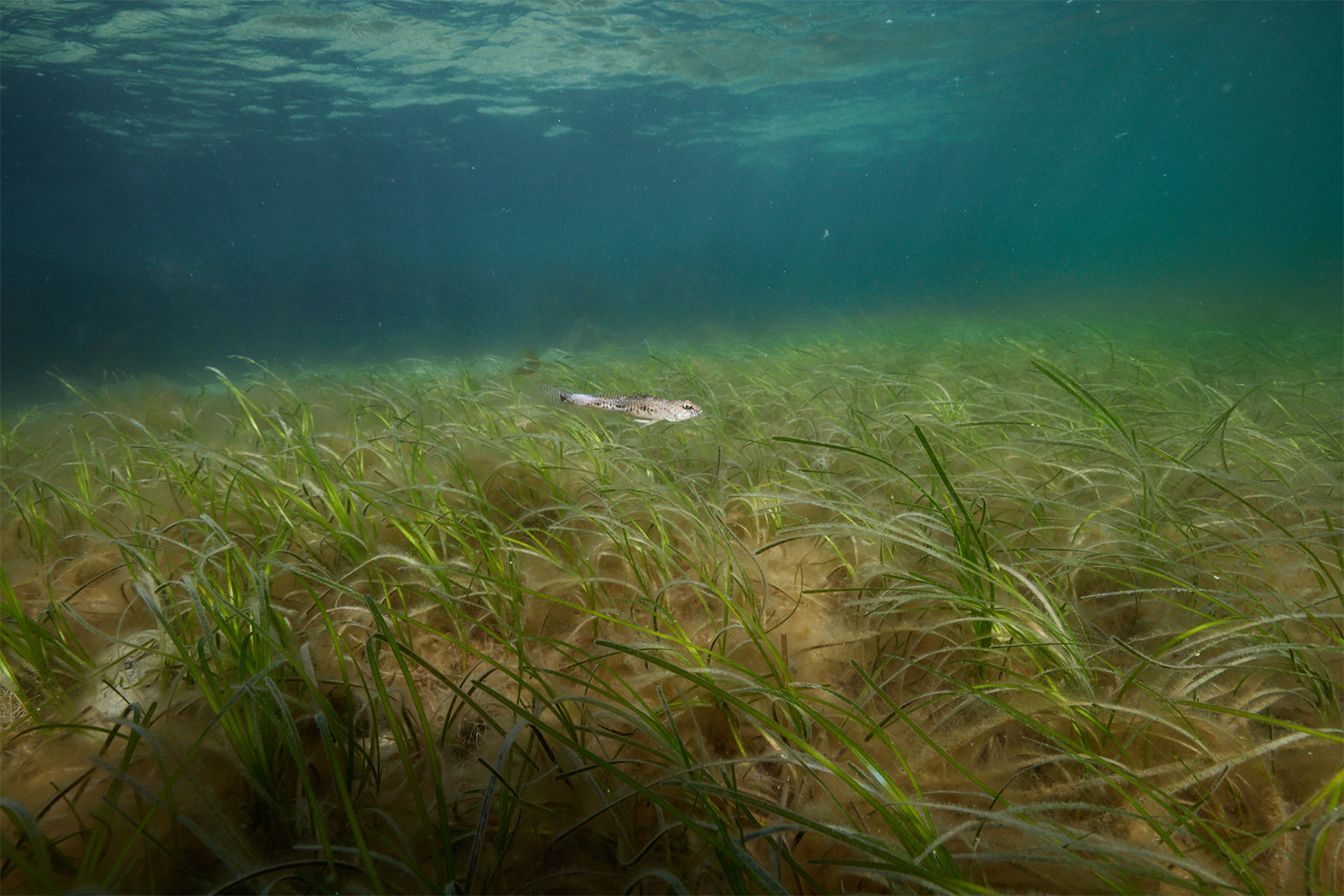
“I guess I’d like to say that we knew strongly that there were synergies between those different things that had made the difference,” Luckenbach said. “But I don’t know that we have the data to completely say that.”
During those early days of the restoration project, neither Luckenbach nor his colleagues published research on the relationship between the eelgrass and oysters, despite being aware that they could be helping each other. But in the years that followed, Luckenbach got involved in another restoration project that spawned some interesting results.
In a 2020 paper published in Science Advances, Luckenbach and colleagues found that the well-established seagrass meadows in Virginia’s coastal bays were performing multiple functions: not only were they improving water quality, storing substantial amounts of carbon and nitrogen, and supporting a diverse mix of species — they were also providing critical habitat for restored bay scallops.
“We understand the relationship between bay scallops and seagrass very well,” Luckenback said in an email following our interview. “The bay scallops are very dependent upon seagrasses and we rarely find any outside of them. We are continuing to enhance the bay scallop population by adding hatchery produced animals to the grass beds. The bay scallop population is clearly expanding in the seagrass beds and are possibly self-sustaining at this point; however we are continuing this enhancement because we do not know for sure what population size will be self-sustaining.”
A smattering of other studies has provided clear evidence that the co-restoration of coastal species can be mutually beneficial. For instance, a 2020 study found that planting spiny kelp (Ecklonia radiata) at the site of a large-scale oyster restoration project at Windara Reef in South Australia helped recruit new oysters to the site. Another study, published in 2016, found that restored oyster reefs in the northern Gulf of Mexico were encouraging the growth of seagrass not only near the reef itself, but also in nearby spillover areas.
Other research has shown that the seascape approach benefits the larger ecosystem. For example, one study found that restoring eelgrass and oyster reefs in San Francisco Estuary helped support an increasing number of vertebrates.

‘A mixed bag’
But other research has shown mixed results, drawing attention to the complex nature of this approach. For instance, there was a 2019 study that compared areas of restored oyster reefs that had seagrass to restored oyster reefs without seagrass in Queensland, Australia. While it found that the presence of seagrass did increase the abundance of commercially important yellowfin bream (Acanthopagrus australis) on the reefs, the seagrass didn’t necessarily increase the overall abundance and diversity of fish. Similarly, a study from 2009 found that the restoration of oyster beds in salt marshes in Alabama, U.S., did not increase the number of fish or crustaceans, which led the researchers to conclude that the additional oyster bed habitat had become functionally “redundant.”
“In the published studies that I know, it’s a little bit of a mixed bag … in terms of whether you’re truly seeing greater abundance, diversity … and species shifts that you can attribute to an actual interaction between those habitats,” Luckenbach said. “It’s a complex thing.”
The seascape approach also raises practical considerations. Restoring just one habitat can be hard work, but trying to restore more than one can present additional challenges.
Between 2016 and 2019, Laura Govers, a marine conservation ecologist who holds positions at both the University of Groningen and the Royal Netherlands Institute for Sea Research, attempted three times to restore both mussel beds and seagrass in the Wadden Sea. While she and her colleagues successfully restored the mussels, they struggled with the seagrass — it either kept getting washed away or eaten by crabs.
“There’s a lot of really nice theoretical background that gave us the argument to actually try this interconnected restoration,” Govers told Mongabay. “It’s just that in practice, it turns out to be pretty challenging.”
While the results of these three co-restoration attempts were not published, Govers said they helped pave the way toward future trials.
“The concept is becoming increasingly popular,” she said. “And I think it’s a great development and also logical because we increasingly recognize that all these habitats are connected.”
Govers said she believes it’s not just important to publish research in scientific journals, but to share knowledge about co-restoration in more informal contexts to increase the chances of these projects succeeding. She added that this knowledge sharing is already happening at marine conferences such as those run by the Society for Ecological Restoration.
“We can advance way, way more rapidly when we openly share knowledge, as opposed to just waiting for something to be published,” Govers said. “Restoration of our natural ecosystems is just a very urgent topic. We have a lot of environmental issues ongoing and restoring our natural ecosystems can actually mitigate some of these effects. So that’s also why the UN has declared this decade of ecosystem restoration.”

‘Ambition to make a difference’
Right now, many seascape restoration projects are still happening at a small scale, often limited by funding, time and practical knowledge. Yet interest continues to sprout and spread for these kinds of projects among conservationists and scientists.
Celine Gamble, a marine conservationist at the Zoological Society of London who helped produce a series of handbooks on restoring coastal ecosystems, told Mongabay this interest makes sense because in many places, including much of the U.K. coastline, overlapping habitats were once the norm. She added that she believes the limited funding and resources generally available for restoration work may be leading conservationists to turn to a seascape-based approach to “maximize restoration potential and benefits.”
“People are becoming more aware of the interconnectivity between those habitats,” Gamble said, “and [the need] to scale up the ambition that we need to actually make a difference.”
Banner image: A conservationist working on a seagrass restoration project. Image courtesy of Seawilding.
Citations:
Altieri, A. H., Silliman, B. R., & Bertness, M. D. (2007). Hierarchical organization via a facilitation cascade in intertidal cordgrass bed communities. The American Naturalist, 169(2), 195-206. doi:10.1086/510603
Angelini, C., Van der Heide, T., Griffin, J. N., Morton, J. P., Derksen-Hooijberg, M., Lamers, L. P., … Silliman, B. R. (2015). Foundation species’ overlap enhances biodiversity and multifunctionality from the patch to landscape scale in southeastern United States salt marshes. Proceedings of the Royal Society B: Biological Sciences, 282(1811), 20150421. doi:10.1098/rspb.2015.0421
Geraldi, N. R., Powers, S. P., Heck, K. L, & Cebrian, J. (2009). Can habitat restoration be redundant? Response of mobile fishes and crustaceans to oyster reef restoration in marsh tidal creeks. Marine Ecology Progress Series, 389, 171-180. doi:10.3354/meps08224
Gilby, B. L., Olds, A. D., Henderson, C. J., Ortodossi, N. L., Connolly, R. M., & Schlacher, T. A. (2019). Seascape context modifies how fish respond to restored oyster reef structures. ICES Journal of Marine Science, 76(4), 1131-1139. doi:10.1093/icesjms/fsz019
McAfee, D., Larkin, C., & Connell, S. D. (2020). Multi-species restoration accelerates recovery of extinguished oyster reefs. Journal of Applied Ecology, 58(2), 286-294. doi:10.1111/1365-2664.13719
Meyer, D. L., Townsend, E. C., & Thayer, G. W. (1997). Stabilization and erosion control value of oyster cultch for intertidal marsh. Restoration Ecology, 5(1), 93-99. doi:10.1046/j.1526-100x.1997.09710.x
Orth, R. J., Lefcheck, J. S., McGlathery, K. S., Aoki, L., Luckenbach, M. W., Moore, K. A., … Lusk, B. (2020). Restoration of seagrass habitat leads to rapid recovery of coastal ecosystem services. Science Advances, 6(41). doi:10.1126/sciadv.abc6434
Sharma, S., Goff, J., Moody, R. M., Byron, D., Heck, K. L., Powers, S. P., … Cebrian, J. (2016). Do restored oyster reefs benefit seagrasses? An experimental study in the Northern Gulf of Mexico. Restoration Ecology, 24(3), 306-313. doi:10.1111/rec.12329
Valiela, I., & Cole, M. L. (2002). Comparative evidence that salt marshes and mangroves may protect seagrass meadows from land-derived nitrogen loads. Ecosystems, 5(1), 92-102. doi:10.1007/s10021-001-0058-4
Williams, B. A., Watson, J. E., Beyer, H. L., Klein, C. J., Montgomery, J., Runting, R. K., … Wenger, A. (2021). The global rarity of intact coastal regions. Conservation Biology. doi:10.1111/cobi.13874
Elizabeth Claire Alberts is a staff writer for Mongabay. Follow her on Twitter @ECAlberts.
FEEDBACK: Use this form to send a message to the author of this post. If you want to post a public comment, you can do that at the bottom of the page.

















